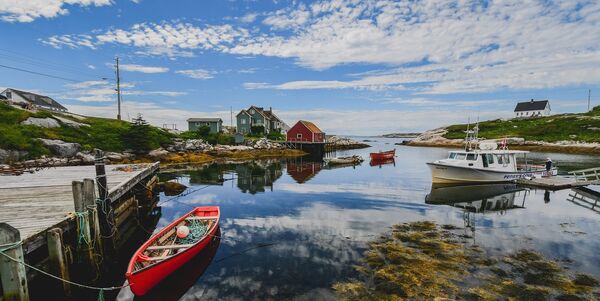Must-see places to visit in the Atlantic Provinces including Nova Scotia, and Prince Edward Island, Canada.
Halifax
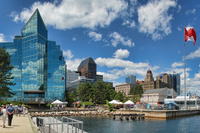
Halifax is the capital city of Nova Scotia's and the waterfront is the most visited destination right across Nova Scotia.
Follow the Halifax waterfront boardwalk along the water’s edge to the world’s second-largest ice-free harbour.
Stretching from the Canadian Museum of Immigration at Pier 21 – the gateway into Canada for over one million immigrants – to Casino Nova Scotia, you’ll pass Historic Properties, unique shops, restaurants, and in the warmer months, graceful tall ships.
You can discover the Halifax Seaport Farmers' Market, the oldest continuously operating farmers’ market in North America, learn about the cities seafaring history through exhibits at the Maritime Museum of the Atlantic which includes displays on the city’s link to the Titanic disaster.

Peggy's Cove
Nova Scotia is home to over 160 historic lighthouses, but no beacon is as photographed as the one in the vibrant fishing village of Peggy’s Cove.
Built in 1915, Peggy’s Point Lighthouse still keeps watch over surging ocean waves and working lobster boats. Amble over giant rocks worn smooth by the sea and share in the view.
Lunenburg
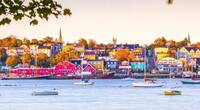
The Old Town of Lunenburg is one of only two urban communities in North America designated as a UNESCO World Heritage site.
Seventy percent of the original colonial buildings from the 18th and 19th centuries continue to greet visitors with their colourful façades.
Wander Old Town Lunenburg’s distinctive waterfront with its colourful buildings and listen for salty tales of seafaring and rum-running and discover a charming town filled with amazing restaurants, distilleries, breweries, and unique shops.
You can even take a walking tour where your guide will wow you with the equally colourful history of the town.
Granville Ferry (Kejimkujik National Park)
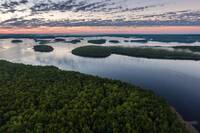
If you ask a Nova Scotian for advice on a place to get away from it all – a place with lush forests, meandering rivers, and island-dotted lakes – you’ll likely hear the name “Keji” again and again. What they mean is Kejimkujik National Park and National Historic Site. It truly is a place where you can escape the hustle and bustle of the world and immerse yourself in the natural beauty of Nova Scotia.
The main part of Kejimkujik was first established as a National Park in 1969, being recognized for its old growth forest, rare wildlife, and traditional Mi’kmaq waterways. The park took its name from Kejimkujik Lake, which is a Mi’kmaq word believed to mean “land where fairies abound." Kejimkujik’s canoe routes had been used by native inhabitants for thousands of years as they travelled between the Bay of Fundy and the Atlantic Coast. They also made their mark while on those journeys, leaving stone carvings, or petroglyphs, on slate outcroppings along the shore. These Mi’kmaq petroglyphs can be seen on guided tours and contain images of traditional Mi’kmaq life, including hunting, fishing, and wildlife.
Grand Pré
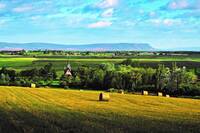
Grand Pre which translates to Great Meadow, was settled in 1680 by Acadians who had ventured out from their original French settlement in Port-Royal. These settlers built the dykes which kept back the tides of the Minas Basin and created these very fertile lands for their crops and animals.
Grand-Pre grew to be the largest of all the Acadian settlements in the Annapolis Valley area, that is until September 5, 1755 when from the church in Grand-Pre made an order that declared all Acadians would be deported, from that date until 1763 more than 10,000 Acadians were deported from Nova Scotia.
Today Grand-Pre is a National Historic Site and it has had a memorial church built on the grounds which serves as a museum. Other notable sites are the Deportation Cross which was built to ensure memory of the deportation and a sculpture of Evangeline the main character in the famed poem by Henry Longfellow.
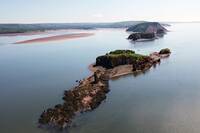
Five Islands
Rising majestically from the shores of the Bay of Fundy, Five Islands Provincial Park is one of Nova Scotia's premiere outdoor destinations.
The park features 90 metre (300 ft.) sea cliffs overlooking the world's highest tides, a spectacular setting for camping or any of the many opportunities that abound for hiking, beachcombing, rock collecting and clam digging.
Bay of Fundy
Located halfway between the north-pole and the equator on Canada’s stunning east coast.
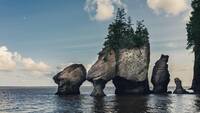
Fundy is a unique coastal environment and is renowned not only for its tides but also for dinosaur fossils but also for the whales that inhabit its waters.
The Bay of Fundy has been voted one of the 7 wonders of North America as it boasts the highest tides on earth, the rarest whales in the world, semi-precious minerals, and dinosaur fossils.
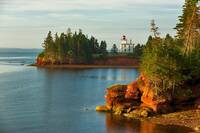
Prince Edward Island
It might be Canada’s smallest province, but Prince Edward Island is still an island of contrasts, from its stunning coastal scenery and busy harbours to its rich farmland and lush valleys.
There are numerous lighthouses that reflect its maritime history, beautiful beaches to walk along, Provincial Parks to explore and it was also the home Lucy Maud Montgomery, author of 'Anne of Green Gables'.
Pictou
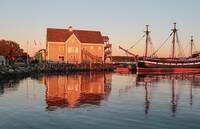
The first wave of Scottish settlers to land at Pictou arrived onboard the sailing ship Hector giving Pictou the claim as the birthplace of New Scotland and you can tour a replica of the original ship at the Hector Heritage Quay.
Discover Pictou on foot or bicycle, with the Jitney Walking Trail, part of The Great Trail connecting directly to the downtown, before taking you out along the harbourfront.
Each summer since 1934, the town has celebrated its marine heritage with the Pictou Lobster Carnival. The three-day event features musical entertainment, parades, carnival rides and, of course, lobster!
Cheticamp
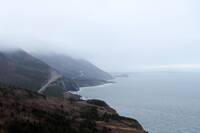
Nestled between the majestic highlands of Cape Breton Island and the waters of the gulf of St Lawrence, Cheticamp is a traditional Arcadian village situated along the picturesque Cabot Trail.
It has a thriving Acadian culture where visitors will often hear the lively sounds of Acadian being spoken and where you can can sample typical Acadian food in local restaurants.
It’s a great place for whale-watching, nature cruises, golf, hiking, cycling, swimming, beach combing, horseback riding, to name but a few.
Don't Miss...
Ingonish
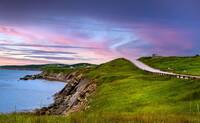
Ingonish is one of the main entrances into the Cape Breton Highlands National Park and is also known for the famous Keltic Lodge Resort which has one of the top 100 golf courses in the world, Highlands Links. You'll discover plenty to do in and around the community of Ingonish, you can meander through the area which stretches between Ingonish Ferry on Cape Smokey, into the National Park, and then back out into the community of Ingonish where you’ll find places to eat, beaches, boat tours, and more.
Baddeck
Baddeck has been described as the beginning – and the end – of Cape Breton Island's world-famous Cabot Trail. Nestled along the shore of the Bras d’Or Lake in Cape Breton, the town is a favourite stop for sailors and those looking for tranquil beauty in the heart of the island.
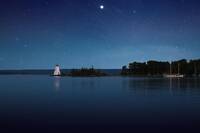
Baddeck has a long history of being an inviting place to rest and admire the surrounding hills and water. The area was a seasonal home to Mi’kmaq settlements and is believed to get its name from the Mi’kmaq word “Abadak”, which means “place with an island near” (referring to the nearby Kidston Island).
The most famous of Baddeck’s summer residents was Alexander Graham Bell, inventor of the telephone, who built two homes on his estate he called “Beinn Bhreagh”, Scottish Gaelic for “Beautiful Mountain”.
Louisbourg
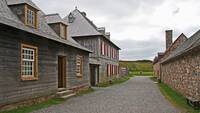
On Cape Breton’s rocky shoreline, the Fortress of Louisbourg takes you back to French colonial life between 1713 and 1758 when Louisbourg was a major fishing centre and cosmopolitan town situated on the trade routes between North America and Europe. This place was first the home of the Mi'kmaw people and in the 18th century, they were joined by the French alongside Basque, German, English, Irish, Scottish, and African people. Today, this one-quarter reconstruction of the original French town and fortifications is the largest and best of its kind in North America, offering a wealth of experiences for visitors to enjoy.
Today, the modern town of Louisbourg welcomes travellers from around the world with an amazing fortress, spectacular walking trails, fishing wharves along the winding Havenside Road, exceptional music and theatre at the intimate Louisbourg Playhouse, and fresh seafood to savour. Absorb the beauty of the surroundings, have a picnic at Lighthouse Point (site of the first lighthouse in Canada, 1734), stroll along the beaches at Kennington Cove, and don’t miss the Sydney & Louisburg Railway Museum.
Dartmouth
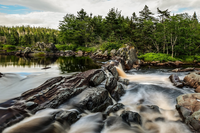
Situated just a short ferry ride across the harbour from downtown Halifax, Dartmouth is home to many quaint cafes, noteworthy food outlets, and a charm all of its own.
Dartmouth, also known as the City of Lakes, boasts 23 lakes that provide opportunities for kayaking, windsurfing, canoeing, and swimming. Paddle on Lake Banook or visit one of the many parks with walking trails and easy access that stretches out into the unspoiled coastal beauty of the Eastern Shore.
Visit the Dartmouth Waterfront to take a walk along the boardwalk, the ideal place for a photo of the Halifax skyline, and Georges and McNabs Islands. Visiting the waterfront on a Saturday morning? Be sure to visit the popular farmers' market at Alderney Landing.
